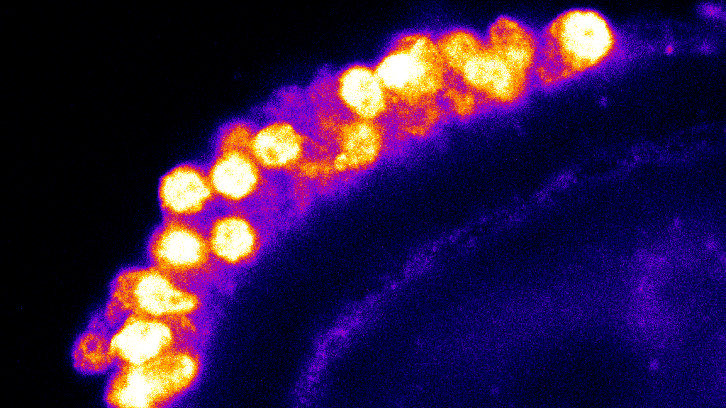Oocytes, mild hypothermia, and vitrification: which is the role of the cold-inducible proteins?

Oocytes can be vitrified for the conservation of animal genetic resources and for the preservation of fertility in women, but the process presents some difficulties. Researchers from the Department of Health and Animal Anatomy have investigated the role of cold-inducible proteins, which increase their expression in hypothermia conditions, to improve the tolerance of oocytes to vitrification.
The vitrification process allows to keep viable cells in liquid nitrogen (-196 ºC) over indefinite time in a vitreous state. This state avoids the formation of intracellular ice crystals, which can break and damage the cells.
The oocytes (also known as ovum or eggs) are quite large cells that are essential for reproduction. These cells can be vitrified for the conservation of animal genetic resources and preservation of fertility in women. However, due to their large size and their marked sensibility to cooling injuries, oocytes present some difficulties to be vitrified.
In response to mild hypothermia, the mammalian cells reduce their metabolism and their overall protein abundance. However, a group of proteins, known as cold-inducible proteins, increases their expression under this condition. These proteins are essential for several cellular processes, such as cell survival. One of the major studied cold-inducible proteins is the cold-inducible RNA-binding protein, also known as CIRBP. Other cold-inducible proteins are the RNA-binding motif protein 3 (RBM3) or the serine and arginine-rich splicing factor 5 (SRSF5). Furthermore, some small molecules can mimic the effect of hypothermia in the absence of cold stimulus. One example is zr17-2, which increases the expression of CIRBP at body temperature conditions. These molecules open new strategies and applications to improve cell tolerance to mild and low temperatures, like the temperatures that oocytes are exposed during the vitrification process. If we were able to increase the oocyte expression of CIRBP and other cold-inducible proteins without an hypothermic challenge before vitrification, we may increase the survival rate of these oocytes after the vitrification process.
In our study, we test the zr17-2 and the exogenous supplementation of CIRBP during the in vitro maturation of bovine oocytes as candidates to increase the bovine oocyte tolerance to vitrification. Unfortunately, we observed no changes in the expression of the cold-inducible proteins tested (CIRBP, RBM3, and SRSF5) once oocytes were exposed to zr17-2 or exogenous CIRBP. However, we observed that oocytes and cumulus cells (the layer of cells that surround the oocyte) exhibited similar responses when exposed to mild hypothermia and vitrification regarding the mRNA expression of the cold-inducible proteins tested. This similar response between the oocytes and cumulus cells may impact the quality of the cumulus-oocyte complexes in terms of vitrification and sublethal hypothermia challenges. Our results encourage further research to unveil the role of these proteins in assisted reproduction techniques.
References
Jaume Gardela*, Mateo Ruiz-Conca, Sergi Olvera-Maneu, Manel López-Béjar, Manuel Álvarez-Rodríguez. The mRNA expression of the three major described cold-inducible proteins, including CIRBP, differs in the bovine endometrium and ampulla during the estrous cycle. Research in Veterinary Science. 2022, 152, 188-189. https://doi.org/10.1016/j.rvsc.2022.08.006


